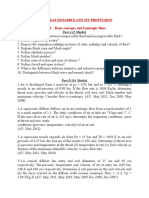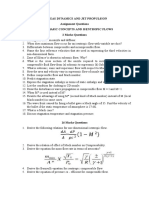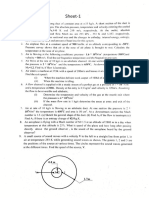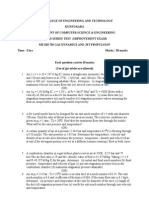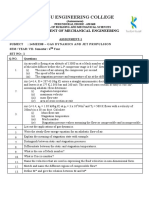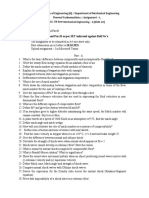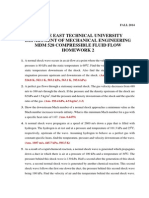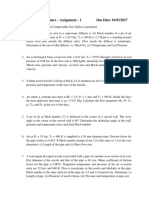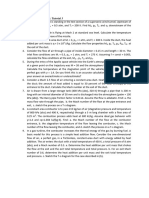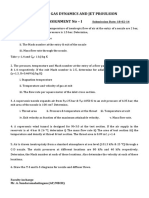0% found this document useful (0 votes)
16 views2 pagesGDJP Assignment 1
This document outlines an assignment for the Gas Dynamics and Jet Propulsion course, detailing various problems related to compressible flow and isentropic flow. It includes calculations for stagnation temperature, mass flow rate, and area of cross section at entry and exit under specific conditions. The assignment is intended for students in the Department of Mechanical Engineering for the academic year 2024-2025.
Uploaded by
mahendranpCopyright
© © All Rights Reserved
We take content rights seriously. If you suspect this is your content, claim it here.
Available Formats
Download as DOCX, PDF, TXT or read online on Scribd
0% found this document useful (0 votes)
16 views2 pagesGDJP Assignment 1
This document outlines an assignment for the Gas Dynamics and Jet Propulsion course, detailing various problems related to compressible flow and isentropic flow. It includes calculations for stagnation temperature, mass flow rate, and area of cross section at entry and exit under specific conditions. The assignment is intended for students in the Department of Mechanical Engineering for the academic year 2024-2025.
Uploaded by
mahendranpCopyright
© © All Rights Reserved
We take content rights seriously. If you suspect this is your content, claim it here.
Available Formats
Download as DOCX, PDF, TXT or read online on Scribd
/ 2


